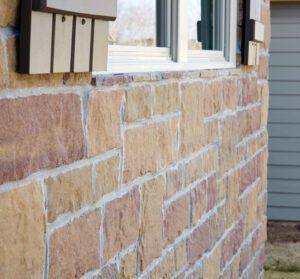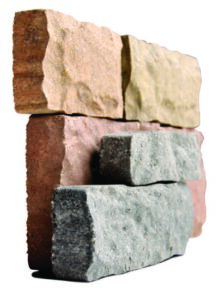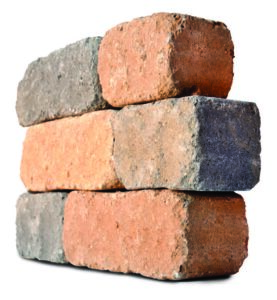Return to News
TIPS & TECHNIQUES FOR WORKING WITH VENEERS
Choosing Between Thin and Full Veneers

Advances in stone veneers have made both full and thin varieties suitable replacements for natural stone in many residential and commercial applications. Both varieties are strong, widely available throughout the country, easier to install than natural stone and come in an array of colors and textures to serve as a versatile design element. When choosing between thin and full veneer for a project, factors to consider include the specific attributes of each veneer type, associated costs and installation options.
Combining the right veneer with the right installation method can positively impact a project’s cost, look and durability.
Thin veneer’s primary advantage over its full counterpart is undoubtedly its lighter weight requiring less structural support. This makes it less expensive to ship, easy to haul and handle on the job site, and easier to cut, trim and set. Most varieties are available with cut corners that make it look like a full stone, as well as specialized pieces such as keystones and sills. As a design element, thin veneer can be essential for bringing stone to non-loadbearing walls and, as such, is perfect for interior applications such as fireplaces, accent walls and even upper-story installations.
In the case of full stone veneer, moisture is less likely to penetrate (if installed correctly) because the joints are often sealed to the depth of the veneer which is, on average, four to six inches. As with thin veneers, manufacturing advances have made full depth veneers consistently sized and modular for less cutting and waste at the job site. And, when the devil is in the details, full stone veneer can also present an advantage over its thinner counterpart.
Many full-depth veneers can help create a stunning end-effect because they come in a choice of sizes and shapes; textured ends available in some brands allow for a finished end look without additional cutting. They can easily accommodate various joints and dry stack styles and can help fulfill last-minute client requests for details such as corbels, lintels or keystones without losing time or going off-budget. These pieces are readily available with many of the thin veneers on the market but have to be ordered in advance to fit within timelines. They can usually be cut from full veneer pieces already on site.
Ultimately, there are more opportunities than ever to match material and installation method to the scope and budget of the building project.
Thin and full-size masonry veneers can fit with the latest trends for sustainable, repurposed and/or natural-look materials while positively impacting cost, R-value, and mold and mildew resistance. Many designers are choosing to mix products to create varied elevations for a more interesting, contemporary look that has migrated from urban centers to within residential settings. With advancements in form and function, masonry veneers have become a valuable tool in advancing design.
THIN VENEER FEATURES
- Lighter weight
- Less expensive to ship
- Easier jobsite handling
- Requires no structural footing
- Can be utilized in virtually any setting
- Saves on installation time and costs

FULL VENEER FEATURES
- Variety of brick shapes and sizes
- Often feature textured ends, meaning there’s no need for additional corner pieces
- Modular format reduces cutting and waste
- Moisture is less likely to penetrate
- Easily accommodate various joints and dry stack styles

Read the full first issue of Modern Masonry Magazine here.
Return to News
Stay Connected
Get the latest news and information from Echelon by signing up to receive our monthly newsletter.